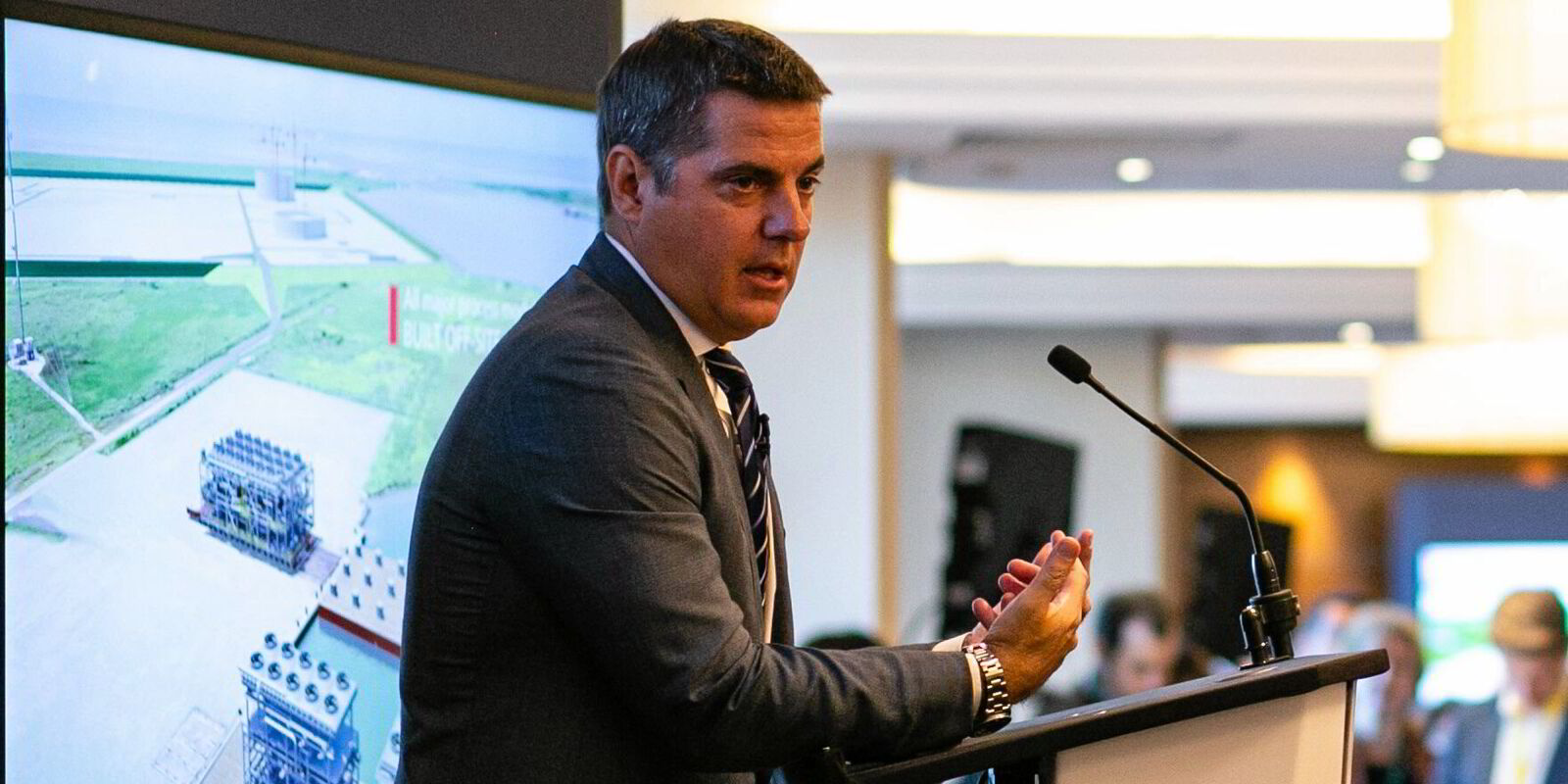An incoming wave of new LNG supply is likely to emerge into a market facing a conflicting set of drivers, according to GIIGNL president Jean Abiteboul.
An incoming wave of new LNG supply is likely to emerge into a market facing a conflicting set of drivers, according to GIIGNL president Jean Abiteboul.
In a forward to the annual report from GIIGNL — the International Group of Liquefied Natural Gas Importers — Abiteboul detailed that there is currently 180 mtpa of new LNG capacity due onstream between now and 2028.
Of this, some 71 mtpa is being built in the US, 33 mtpa in Qatar and 19 mtpa in Canada.
“This wave of supply, if realised on schedule, could significantly alter the market balance in the coming years — depending, of course, on the evolution of global demand,” Abiteboul said.
“However, the trajectory of demand remains deeply uncertain, influenced by conflicting market drivers.”
On the plus side, he listed robust energy demand growth in Asia, where LNG imports grew by 23% in 2024, the need to cut emissions, the growth in LNG as a marine fuel and the need for gas as a balance for renewables.
Conversely, Abiteboul said the gas market faces “considerable downside pressures” from political commitments toward fossil fuel phase-outs, intensified renewable energy deployment and electrification, along with macroeconomic uncertainties such as economic downturns, inflationary pressures and geopolitical conflicts.
- Global liquefaction capacity: 492 mtpa
- Including floating LNG (FLNG) capacity: 14 mtpa
- Global regasification capacity: 1,188 mtpa
- Final investment decisions taken on: 14 mtpa of capacity
- New liquefaction plants coming online: 3
- New regasification terminals: 12
- Exporting countries: 22
- Importing markets: 49
- LNG fleet: 831 vessels
- Trade imported on a spot basis: around 30%
On the latter, he highlighted the US’ trade and tariff disputes and the European Commission’s recently announced plans to formally ban imports of Russian LNG, which accounted for 19% of European Union LNG imports in 2024.
In its report, GIIGNL detailed that global LNG volumes grew by 1% in 2024 to reach 406m tonnes, describing it as “flat”.
But the body said this masks significant regional shifts in both demand and supply patterns, with Asia regaining buying momentum in 2024, Europe scaling back imports and buyers in the Middle East and Americas emerging as key drivers of market growth.
Abiteboul said 2024’s slowdown does not mark stabilisation, but highlights the increasing volatility and complexity of LNG markets.
He quoted Greek philosopher Heraclitus, stating: “The road up and the road down are one and the same” and said this is “a reminder that cycles of growth and correction are intrinsic to this dynamic industry”.
During 2024, GIIGNL said Mexico and the Republic of the Congo joined the LNG producers.
Of the 492 mtpa of global liquefaction capacity, 14 mtpa is provided by floating LNG production units.
Three new projects started last year, adding 8.6 mtpa of capacity comprising the 0.6-mtpa Congo FLNG in the Republic of Congo, the first 6.6 mtpa train of Arctic LNG 2 in Russia and the 1.4 mtpa Altamira Fast LNG in Mexico.
During last year, final investment decisions were taken on four projects of 14 mtpa.
These comprise TotalEnergies’ 1 mtpa Marsa LNG project in Oman, the Adnoc-led 9.6 mtpa Ruwais LNG in the United Arab Emirates, the FLNG-based 3.3 mtpa Cedar LNG project in Canada and a 1.2 mtpa FLNG project in Indonesia.
Last year, global regasification capacity reached 1,188 mtpa following the addition of 31 mtpa from 12 new terminals and 19.5 mtpa from seven completed expansion projects.
Content Original Link:
" target="_blank">
































